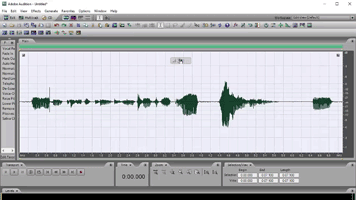 Normalization is another example of an audio recording concept whose term is both misleading, needlessly confusing.
Normalization is another example of an audio recording concept whose term is both misleading, needlessly confusing.
What Does Normalization Mean?
Basically it means turning up the volume. Well, technically it is “increasing the gain.” But that’s another story you can read about here:
Gain, Volume, Loudness and Levels – What Does It All Mean?). You turn up a selected of a piece of audio until the loudest/tallest peak is as loud as possible without clipping. What’s so hard about that?
Find out more about normalization in our post: Audio Normalization: What Is It And Should I Care?
People normalize their audio to make it as loud as it can be.
But the term “normalization” implies that if you do this to multiple files, they’ll all be the same loudness – at least that is what normalizing something means to me.
But surely anyone can see that this simply is not true. The amount that your audio is turned up depends on how high the highest peak is.
Say you have two recordings of equal average loudness. If one recording had a single very loud peak, like a quick shout, that only about 3 dB lower than max volume, that entire file would only be turned up by 3 dB.
If the loudest part of another recording were not very high, say 10 dB lower than maximum volume, then normalizing that audio would increase the whole file by 10 dB.
See? These files, who had equivalent average loudness prior to normalization now have radically different volumes.
That (the idea that after normalizing multiple audio files, they’ll all be the same loudness) is only one of the normalization myths discussed in this article:
http://www.hometracked.com/2008/04/20/10-myths-about-normalization/
Leave a Reply